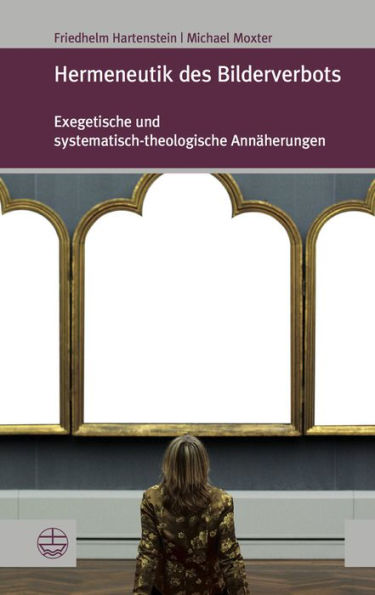English summary: In the history of the Jewish and Christian religions, the biblical prohibition of images has played an important role in the delimitation against iconic cults, and it has fuelled the Byzantine iconoclasm just as much as that of the Reformation. What were the primary motivations for refusing visual representations of God? And how can this refusal be reconciled with the tradition of the image of Christ as the representation of the invisible God rendered possible through the concept of the incarnation? Which delimitations are implemented by the Old Testament formulations of the prohibition of images? What is its significance in religious philosophy, aesthetics, and systematic theology, and what is the position of contemporary theology regarding the non-representativeness of God? The approaches to this topic by an exegete and a systematician are carried by their shared conviction that, in view of the iconic turn in cultural studies and theology, an appropriate hermeneutics of the prohibition of images is as rewarding as it is needed. German description: Das biblische Bilderverbot hat in der Geschichte der judischen und der christlichen Religion eine wichtige Rolle fur die Abgrenzung der eigenen Identitat gegenuber den Bilderkulten gespielt und den byzantinischen Bilderstreit ebenso befeuert wie den Bildersturm der Reformationszeit. Was waren die leitenden Intentionen bei der Ablehnung bildlicher Vergegenwartigungen Gottes? Und wie vertragt sich diese Ablehnung mit der durch den Gedanken der Inkarnation ermoglichten Tradition des Christusbildes als Reprasentation des unsichtbaren Gottes? Welche Abgrenzungen vollziehen die alttestamentlichen Formulierungen des Bilderverbotes und wie ist es religions- und theo-logiegeschichtlich zu beurteilen? Was folgt aus den neueren archaologischen Einsichten zur Ikonographie Palastinas fur die Auslegung des Bilderverbotes? Welche Bedeutung hat es in Religionsphilosophie, Asthetik und Systematischer Theologie und wie stellt sich die Theologie heute zur Nicht-Bildlichkeit Gottes? Die Annaherungen aus der Sicht eines Exegeten und eines Systematikers sind von der gemeinsamen Uberzeugung getragen, dass eine sachgemasse Hermeneutik des Bilderverbotes angesichts des iconic turn in Kulturwissenschaft und Theologie ebenso lohnend wie notig ist.
English summary: In the history of the Jewish and Christian religions, the biblical prohibition of images has played an important role in the delimitation against iconic cults, and it has fuelled the Byzantine iconoclasm just as much as that of the Reformation. What were the primary motivations for refusing visual representations of God? And how can this refusal be reconciled with the tradition of the image of Christ as the representation of the invisible God rendered possible through the concept of the incarnation? Which delimitations are implemented by the Old Testament formulations of the prohibition of images? What is its significance in religious philosophy, aesthetics, and systematic theology, and what is the position of contemporary theology regarding the non-representativeness of God? The approaches to this topic by an exegete and a systematician are carried by their shared conviction that, in view of the iconic turn in cultural studies and theology, an appropriate hermeneutics of the prohibition of images is as rewarding as it is needed. German description: Das biblische Bilderverbot hat in der Geschichte der judischen und der christlichen Religion eine wichtige Rolle fur die Abgrenzung der eigenen Identitat gegenuber den Bilderkulten gespielt und den byzantinischen Bilderstreit ebenso befeuert wie den Bildersturm der Reformationszeit. Was waren die leitenden Intentionen bei der Ablehnung bildlicher Vergegenwartigungen Gottes? Und wie vertragt sich diese Ablehnung mit der durch den Gedanken der Inkarnation ermoglichten Tradition des Christusbildes als Reprasentation des unsichtbaren Gottes? Welche Abgrenzungen vollziehen die alttestamentlichen Formulierungen des Bilderverbotes und wie ist es religions- und theo-logiegeschichtlich zu beurteilen? Was folgt aus den neueren archaologischen Einsichten zur Ikonographie Palastinas fur die Auslegung des Bilderverbotes? Welche Bedeutung hat es in Religionsphilosophie, Asthetik und Systematischer Theologie und wie stellt sich die Theologie heute zur Nicht-Bildlichkeit Gottes? Die Annaherungen aus der Sicht eines Exegeten und eines Systematikers sind von der gemeinsamen Uberzeugung getragen, dass eine sachgemasse Hermeneutik des Bilderverbotes angesichts des iconic turn in Kulturwissenschaft und Theologie ebenso lohnend wie notig ist.

Hermeneutik des Bilderverbots: Exegetische und systematisch-theologische Annaherungen
360
Hermeneutik des Bilderverbots: Exegetische und systematisch-theologische Annaherungen
360Paperback

Product Details
| ISBN-13: | 9783374030606 |
|---|---|
| Publisher: | Evangelische Verlagsanstalt |
| Publication date: | 07/01/2016 |
| Series: | Forum Theologische Literaturzeitung Series , #26 |
| Pages: | 360 |
| Product dimensions: | 4.69(w) x 7.44(h) x (d) |
| Language: | German |
